Richard David Bach is an American writer. He has written numerous flight-related works of fiction and non-fiction. His works include Jonathan Livingston Seagull (1970) and Illusions: The Adventures of a Reluctant Messiah (1977), both of which were among the 1970s' biggest sellers.

Jonathan Livingston Seagull is an allegorical fable in novella form written by American author Richard Bach and illustrated with black-and-white photographs shot by Russell Munson, It is about a seagull who is trying to learn about flying, personal reflection, freedom, and self-realization. It was first published in book form in 1970 with little advertising or expectations; by the end of 1972, over a million copies were in print, the book having reached the number one spot on bestseller lists mostly through word of mouth recommendations.

Barnstorming was a form of entertainment in which stunt pilots performed tricks individually or in groups that were called flying circuses. Devised to "impress people with the skill of pilots and the sturdiness of planes," it became popular in the United States during the Roaring Twenties.

Didier Masson was a pioneering French aviator. He was born in Asnières, France. He died and was buried in Mérida, Yucatan, Mexico. Among his adventures was his life as a pioneering barnstormer, being the second flier in history to bomb a surface warship, as well as combat service in the Lafayette Escadrille with Edwin C. Parsons and Charles Nungesser. In one of the more unusual aerial victories of history, Masson shot down an enemy plane after his own plane's motor quit running. Later in life, he was a manager for pioneer Pan American World Airways, as well as a French consular officer.

Alvin Melvin "Tex" Johnston was an American test pilot for Bell Aircraft and the Boeing Company.
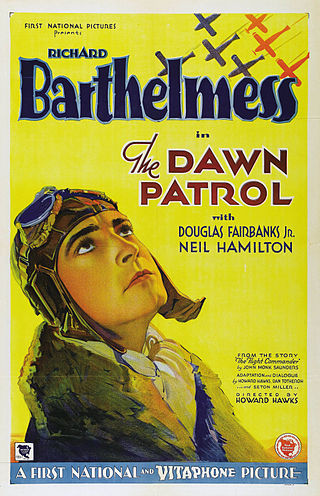
The Dawn Patrol is a 1930 American pre-Code World War I film starring Richard Barthelmess and Douglas Fairbanks Jr. It was directed by Howard Hawks, a former World War I flight instructor, who even flew in the film as a German pilot in an uncredited role. The Dawn Patrol won the Academy Award for Best Story for John Monk Saunders, an American writer said to have been haunted by his inability to get into combat as a flyer with the U.S. Air Service. It was subsequently remade in 1938 with the same title, and the original was then renamed Flight Commander and released later as part of the Warner Bros. film catalog.
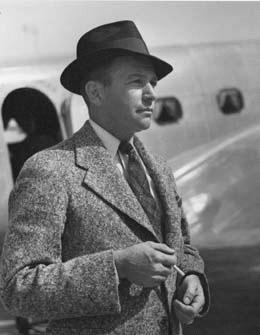
Clyde Edward Pangborn, nicknamed "Upside-Down Pangborn", was an American aviator and barnstormer who performed aerial stunts in the 1920s for the Gates Flying Circus. He was its half-owner, chief pilot and operating manager, working in partnership with Ivan R. Gates. In 1931, Pangborn and co-pilot Hugh Herndon Jr. flew their plane, Miss Veedol, on the first non-stop flight across the Pacific Ocean.

Lincoln Beachey was a pioneer American aviator and barnstormer. He became famous and wealthy from flying exhibitions, staging aerial stunts, helping invent aerobatics, and setting aviation records.

The Great Waldo Pepper is a 1975 American drama film directed, produced, and co-written by George Roy Hill. Set during 1926–1931, the film stars Robert Redford as a disaffected World War I veteran pilot who missed the opportunity to fly in combat, and examines his sense of postwar dislocation in 1920s America. The cast includes Margot Kidder, Bo Svenson, Edward Herrmann and Susan Sarandon. The Great Waldo Pepper depicts barnstorming during the 1920s and the accidents that led to aviation regulations by the Air Commerce Act.
This is a list of bestselling novels in the United States in the 1970s, as determined by Publishers Weekly. The list features the most popular novels of each year from 1970 through 1975.

The Progressive Aerodyne SeaRey is an American two-seat, single-engine, amphibious flying boat designed and manufactured by Progressive Aerodyne originally in Orlando, Florida, and now in Tavares, Florida. It was first flown in November 1992 and is sold as a kit aircraft for amateur construction as well as a light-sport aircraft.

Sometimes dubbed the Golden Age of Aviation, the period in the history of aviation between the end of World War I (1918) and the beginning of World War II (1939) was characterised by a progressive change from the slow wood-and-fabric biplanes of World War I to fast, streamlined metal monoplanes, creating a revolution in both commercial and military aviation. By the outbreak of World War II in 1939 the biplane was all but obsolete. This revolution was made possible by the continuing development of lightweight aero engines of increasing power. The jet engine also began development during the 1930s but would not see operational use until later.
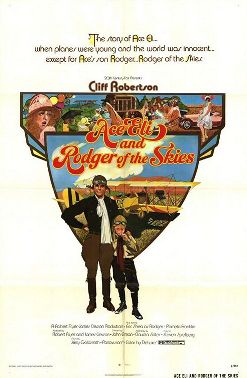
Ace Eli and Rodger of the Skies is a 1973 American adventure comedy film directed by John Erman from a screenplay by Claudia Salter. The film centers on a barnstorming pilot and his son as they fly around the United States in the 1920s, having adventures along the way. One of the driving forces behind the production, Robertson was a real life pilot, although Hollywood stunt pilot Frank Tallman flew most of the aerial scenes. The film was the first feature credit for filmmaker Steven Spielberg, who wrote the story.
Moye Wicks Stephens was an American aviator and businessman. He was a pioneer in aviation, circumnavigating the globe with adventure writer Richard Halliburton in 1931, and co-founding Northrop Aircraft, Inc.
Fiction in the 1970s brought a return of old-fashioned storytelling, especially with Erich Segal's Love Story. The early seventies also saw the decline of previously well-respected writers, such as Saul Bellow and Peter De Vries, both of whom released poorly received novels at the start of the decade, but rebounded critically as the decade wore on. Racism remained a key literary subject. John Updike emerged as a major literary figure with his 1971 novel Rabbit Redux. Reflections of the 1960s experience also found roots in the literature of the decade through the works of Joyce Carol Oates and Wright Morris. With the rising cost of hardcover books and the increasing readership of "genre fiction", the paperback became a popular medium. Criminal non-fiction also became a popular topic. Irreverence and satire, typified in Kurt Vonnegut's Breakfast of Champions, were common literary elements. The horror genre also emerged, and by the late seventies Stephen King had become one of the most popular novelists in America, a coveted position he maintained in the following decade.

Emil Matthew Laird was a pioneering American aircraft designer, builder, pilot, and businessman. He put the first commercial aircraft into production at his E. M. Laird Aviation Company.
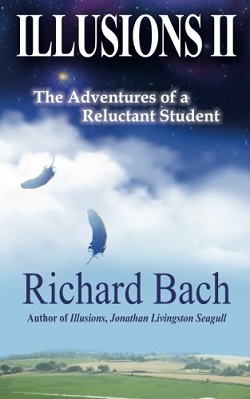
Illusions II: The Adventures of a Reluctant Student is the 2014 novel by writer and pilot Richard Bach. The first Illusions book was published in 1977 and was an international best-seller, telling the story of a pilot who encounters a messiah who has absconded from the "job" of being a messiah. The sequel is in author Bach's own voice, as his "imaginary" literary characters help him in his recovery from his real-life plane crash in August 2012.

One is a 1988 novel by Richard Bach about what could happen in an alternate world. The characters are based on Bach and his wife, Leslie Parrish.
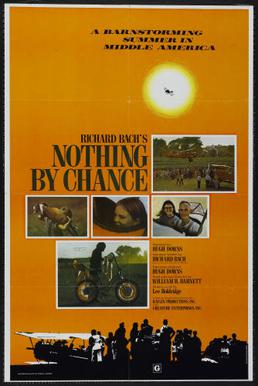
Nothing by Chance is a 1975 American documentary film based on the 1969 book by Richard Bach, Nothing by Chance: A Gypsy Pilot's Adventures in Modern America. The film centers on modern barnstorming around the United States in the 1970s. One of the driving forces behind the production, star Richard Bach, is a pilot in real life, and recruited a group of his friends who were also pilots to recreate the era of the barnstormer.
Ivan Rhuele "Van" Gates was an American aviator and entrepreneur. While a member of the San Francisco Police Department, he is credited with being the first to transport a prisoner by air. He founded or co-founded the barnstorming Gates Flying Circus, which attained much success and fame in the 1920s. Later, he and designer Charles Healy Day established the Gates-Day Aircraft Company, subsequently renamed the New Standard Aircraft Company, to design and manufacture airplanes.















